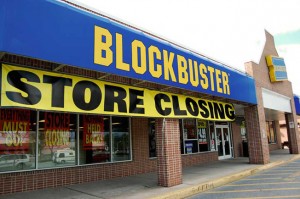The demise of former movie rental giant Blockbuster is a prime example of the consequences of failing to adapt to consumer trends. The corporation recently closed its last 300 corporate stores. Less than 50 franchises remain open, a far cry from the 6500 stores open in 2010.
Despite popular belief, Blockbuster did not fall because of Netflix; in fact, it had several opportunities to purchase the online company, the first being in the year 2000 for $50 million. Additionally, by 2007, Blockbuster had crushed Netflix with its Total Access online service, with Netflix CEO Reed Hastings receiving permission from his board to begin merger talks with Blockbuster.
Instead of buying the company and securing hegemony of the movie renting industry, Blockbuster turned down the opportunity. A new CEO, James W. Keyes, then introduced a revamped business strategy that involved de-emphasizing the unprofitable Total Access online service, in favor of an in-store, retail-oriented model.
Netflix, Redbox, and video on-demand services became more cost efficient and cut the revenue of the high cost Blockbuster at the knees. Blockbuster’s ignorance to the developing rental system and refusal to move away from a their prehistoric business plan is what crippled the once mighty chain.
Works Cited
Goldsmith, Jill. “Blockbusted!” www.variety.com. Oct. 9, 2005 2005.Web. <http://variety.com/2005/biz/news/blockbusted-how-technology-and-lack-of-vision-took-down-blockbuster-1117930420/>.

